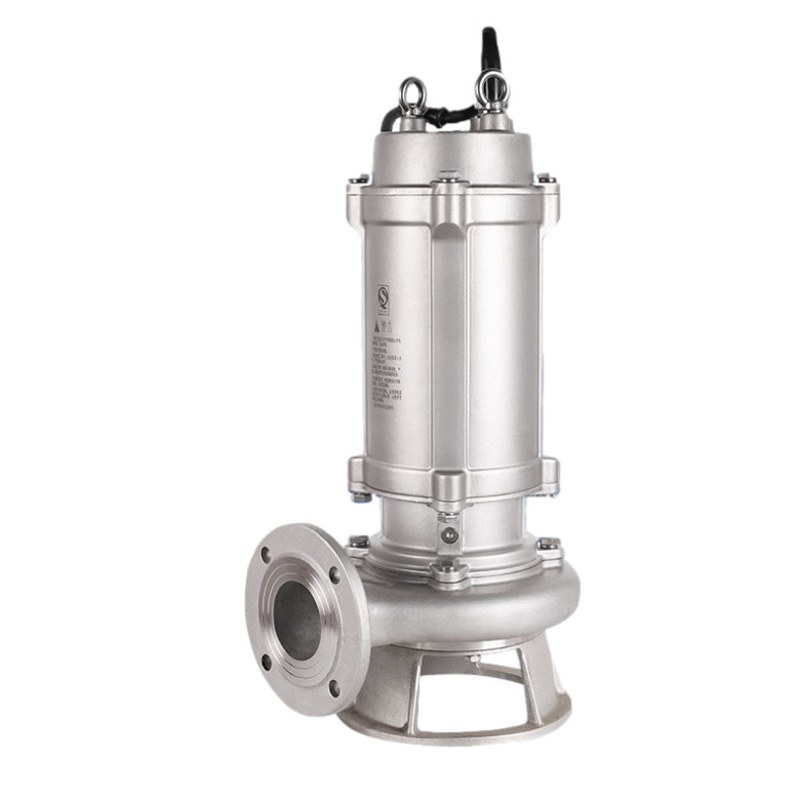Classification of Sewage Pumps and Introduction to Sewage Pump Impeller Types
2025-10-24
Classification of Sewage Pumps
Sewage pumps can be categorized into the following types: submersible sewage pumps (under-liquid type), pipeline sewage pumps, submersible sewage pumps (fully submerged type), vertical sewage pumps, corrosion-resistant sewage pumps, acid-resistant sewage pumps, and self-priming sewage pumps.
Common sewage pump models include the PW series and PWL series:
- For PW series sewage pumps, the most common pressure chamber (volute) is the spiral volute. For built-in submersible pumps, radial guide vanes or channel-type guide vanes are often used.
- For PWL series sewage pumps, the impeller and pressure chamber are the two core components—their performance directly determines the pump’s overall performance.
Like other pumps, sewage pumps rely on two core components: the impeller and pressure chamber. The quality of these two parts dictates the pump’s performance, including its anti-clogging ability, efficiency, cavitation resistance, and wear resistance. Below is a detailed introduction to each component, with a focus on impellers:

1. Types of Impeller Structures
Impeller structures for sewage pumps fall into four main categories: vane-type (open and closed), vortical, channel-type (single-channel and double-channel), and screw-centrifugal.
① Vane-Type Impellers (Open and Semi-Open)
Open and semi-open impellers are easy to manufacture. If they become clogged, cleaning and maintenance are straightforward. However, during long-term operation, particle abrasion widens the gap between the vanes and the inner sidewall of the pressure chamber—this reduces the pump’s efficiency. A larger gap also disrupts the pressure difference distribution on the vanes, causing significant vortex losses and increasing the pump’s axial force. Additionally, the widened gap destabilizes the flow pattern of the liquid in the channel, leading to pump vibration.
This type of impeller is not suitable for transporting media with large particles or long fibers. In terms of performance, its maximum efficiency is only about 92% of that of ordinary closed impellers, and its head curve is relatively flat.
② Vortical Impellers
For pumps with vortical impellers, part or all of the impeller is separated from the flow channel of the pressure chamber. This design gives the pump excellent anti-clogging performance and strong ability to pass through particles and long fibers. When particles flow in the pressure chamber, they are driven by the vortex generated by the impeller’s rotation—suspended particles themselves do not generate energy but exchange energy with the liquid in the channel.
During the flow process, suspended particles or long fibers do not come into contact with the vanes, so vane abrasion is minimal. There is no issue of efficiency dropping sharply due to widened gaps from abrasion over long-term operation. Pumps with vortical impellers are ideal for transporting media containing large particles and long fibers.
In terms of performance, their efficiency is relatively low (only about 70% of that of ordinary closed impellers), and their head curve is flat.
③ Closed Impellers
Closed impellers have relatively high efficiency and maintain stable performance during long-term operation. Pumps equipped with closed impellers have small axial force, and auxiliary vanes can be installed on the front and rear cover plates:
- Auxiliary vanes on the front cover reduce vortex losses at the impeller inlet and minimize particle abrasion on the seal ring.
- Auxiliary vanes on the rear cover not only balance the axial force but also prevent suspended particles from entering the mechanical seal cavity, protecting the mechanical seal.
However, closed impellers have poor anti-clogging performance and are prone to entanglement. They are not suitable for transporting untreated sewage containing large particles or long fibers.
④ Channel-Type Impellers
Channel-type impellers are “bladeless”—their flow channel is a curved passage that runs from the inlet to the outlet. This design makes them highly anti-clogging and suitable for transporting media with large particles and long fibers.
In terms of performance, their efficiency is close to that of ordinary closed impellers, but the head curve of pumps with this impeller is steeper. The power curve is relatively stable, so there is little risk of overloading. However, their cavitation resistance is not as good as that of ordinary closed impellers, and they are particularly suitable for pumps with pressurized inlets.
⑤ Screw-Centrifugal Impellers
The vanes of screw-centrifugal impellers are twisted spiral blades that extend axially from the suction port on a conical hub. Pumps with this impeller combine the functions of positive displacement pumps and centrifugal pumps:
- When suspended particles pass through the vanes, they do not collide with any part of the pump, so there is little damage to the particles and minimal disruption to the transported medium.
- Thanks to the propelling effect of the spiral structure, the impeller has strong ability to pass through suspended particles.
This type of impeller is ideal for transporting media with large particles, long fibers, or high concentrations. It has obvious advantages in scenarios where the transported medium must be protected from damage. In terms of performance, pumps with this impeller have a steeply dropping head curve and a relatively flat power curve.
2. Structure of the Pressure Chamber
The most common pressure chamber for sewage pumps is the volute; for built-in submersible pumps, radial guide vanes or channel-type guide vanes are often used. Volutes come in three types:
- Spiral volutes: Rarely used in sewage pumps.
- Annular volutes: Simple in structure and easy to manufacture, they are more commonly used in small sewage pumps. However, their application range has gradually shrunk with the emergence of intermediate volutes.
- Intermediate (semi-spiral) volutes: Combine the high efficiency of spiral volutes and the high permeability of annular volutes, making them increasingly popular among manufacturers.
Conclusion
In summary, any series of sewage pumps is essentially a combination of a specific impeller type and a pressure chamber design, tailored to the transported medium and installation requirements. As long as the impeller and pressure chamber are optimally matched, the pump’s various performance indicators can be guaranteed. Of course, the design and manufacturing of other components should not be overlooked either.




